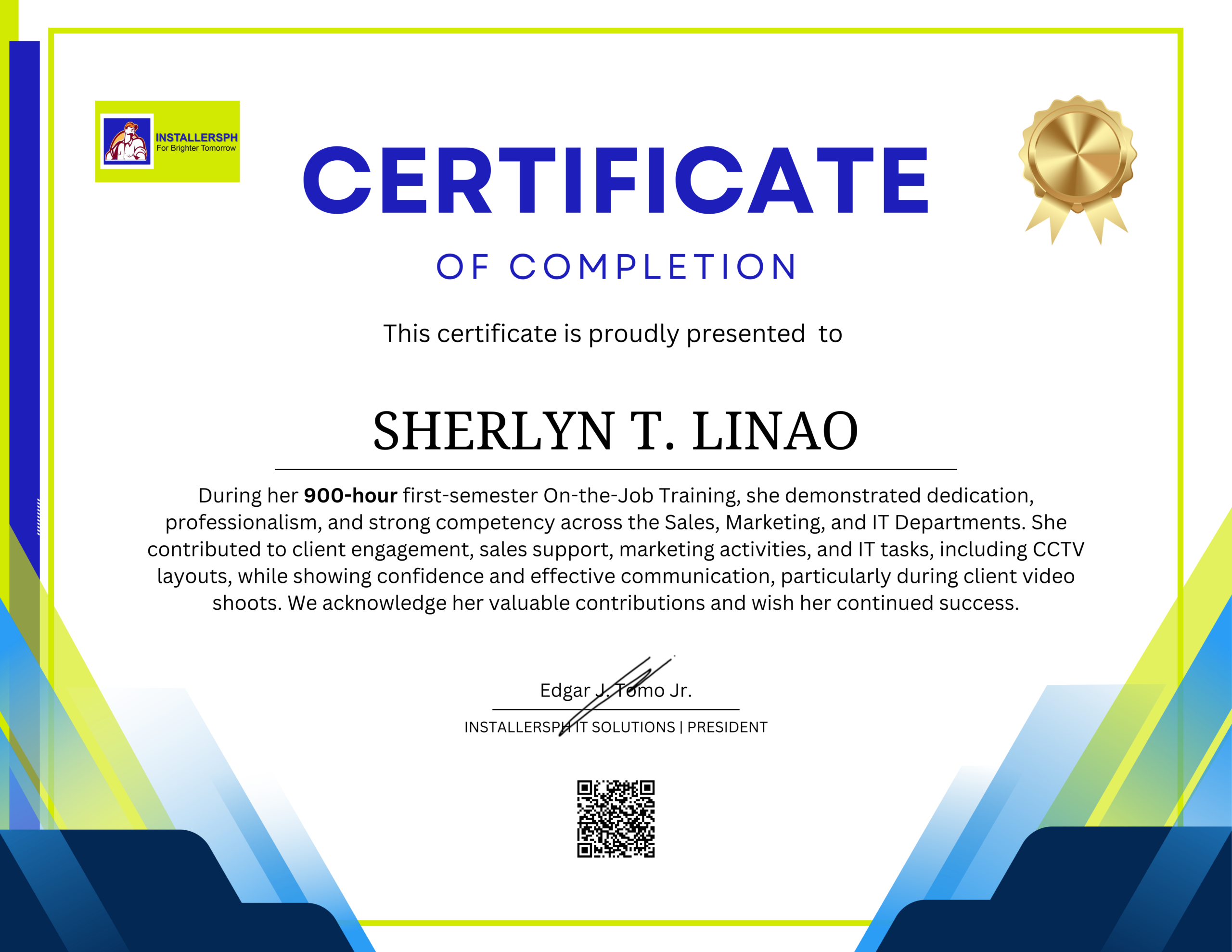Celebrating a Year of Growth and Success at InstallersPH IT Solutions. Introduction. As the year comes to a close, InstallersPH IT Solutions takes a moment to reflect on a journey defined by …
Integrating CCTV Cameras with Home Automation Systems.

In the modern age, home security is a top priority for homeowners worldwide. With advancements in technology, integrating Closed-Circuit Television (CCTV) cameras with Home Automation Systems has become a popular choice for enhancing security measures. This comprehensive guide explores the benefits, considerations, and best practices for seamlessly integrating CCTV cameras with home automation systems.
Introduction
In recent years, the convergence of security and smart home technology has revolutionized the way homeowners protect their properties. CCTV cameras, once standalone devices, are now being integrated into sophisticated home automation systems, offering users greater control, convenience, and peace of mind.
Understanding Home Automation Systems
Before delving into the integration of CCTV cameras, it’s essential to grasp the fundamentals of home automation systems. Home automation refers to the use of technology to control various aspects of a home remotely. This can include lighting, heating, ventilation, air conditioning (HVAC), entertainment systems, and security devices.
The Role of CCTV Cameras in Home Security
CCTV cameras have long been a staple in security systems, providing continuous surveillance and recording of activities in and around the property. With advancements in camera technology, modern CCTV systems offer high-definition video, night vision, motion detection, and remote access capabilities, making them an indispensable tool for home security.
Benefits of Integrating CCTV Cameras with Home Automation Systems
1. Seamless Integration
By integrating CCTV cameras with home automation systems, homeowners can consolidate their security infrastructure into a single, cohesive platform. This integration allows for centralized control and monitoring of security cameras alongside other smart home devices.
2. Remote Monitoring and Control
One of the primary advantages of integrating CCTV cameras with home automation systems is the ability to monitor and control security cameras remotely. Whether at home or away, users can access live video feeds, receive real-time alerts, and even adjust camera settings using their smartphones or tablets.
3. Enhanced Security Features
Home automation systems can enhance the functionality of CCTV cameras by incorporating advanced security features such as geofencing, facial recognition, and AI-powered analytics. These features enable more intelligent surveillance and proactive threat detection, helping homeowners identify and respond to potential security breaches more effectively.
4. Integration with Other Smart Devices
Integrated CCTV cameras can communicate with other smart devices in the home ecosystem, such as smart door locks, motion sensors, and lighting systems. This interoperability allows for automated responses to security events, such as triggering lights or locking doors in response to motion detected by the cameras.
5. Energy Efficiency
Home automation systems can contribute to energy savings by optimizing the use of CCTV cameras based on occupancy patterns and environmental conditions. For example, cameras can be programmed to activate only when motion is detected or during specific times of the day, reducing energy consumption without compromising security.
Considerations for Integration
While integrating CCTV cameras with home automation systems offers numerous benefits, several considerations must be taken into account to ensure a seamless and effective integration:
1. Compatibility
Ensure that the CCTV cameras and home automation system are compatible with each other and can communicate effectively. It’s essential to choose devices that support common communication protocols such as Wi-Fi, Bluetooth, or Zigbee.
2. Scalability
Consider the scalability of the integrated system to accommodate future expansions or upgrades. Choose a flexible and modular architecture that allows for the addition of more cameras or smart home devices as needed.
3. Data Security and Privacy
Protecting the security and privacy of recorded footage is paramount when integrating CCTV cameras with home automation systems. Implement robust encryption protocols, secure authentication mechanisms, and regular software updates to mitigate the risk of unauthorized access or data breaches.
4. Installation and Configuration
Proper installation and configuration are critical to the successful integration of CCTV cameras with home automation systems. Follow manufacturer guidelines and best practices to ensure that cameras are positioned correctly, connected securely, and configured appropriately for optimal performance.
5. User Experience
Consider the user experience when designing the integration between CCTV cameras and home automation systems. Provide intuitive interfaces, clear instructions, and responsive customer support to ensure that users can easily navigate and manage their security settings.
Best Practices for Integration
To maximize the benefits of integrating CCTV cameras with home automation systems, consider the following best practices:
1. Centralized Management
Utilize a centralized management interface or mobile app to control and monitor all integrated devices from a single platform. This simplifies the user experience and enables more efficient management of security settings.
2. Customized Automation Rules
Take advantage of the automation capabilities of home automation systems to create customized rules and triggers for CCTV cameras. For example, set up rules to automatically arm the cameras when the homeowner leaves the house or to send alerts when specific motion patterns are detected.
3. Regular Maintenance and Updates
Perform regular maintenance and software updates to ensure the continued functionality and security of integrated CCTV cameras and home automation systems. Stay informed about firmware updates, security patches, and new features released by the manufacturers.
4. Backup and Redundancy
Implement backup and redundancy measures to safeguard recorded footage in case of hardware failures or system outages. Store backups of critical data in secure off-site locations or cloud-based storage solutions to prevent data loss.
5. User Education and Training
Provide comprehensive user education and training to homeowners and other authorized users on how to effectively use and manage integrated CCTV cameras and home automation systems. This includes instructions on accessing live feeds, reviewing recorded footage, and responding to security alerts.
Conclusion
Integrating CCTV cameras with home automation systems offers homeowners a comprehensive solution for enhancing their security posture. By seamlessly combining surveillance technology with smart home functionality, users can enjoy greater control, convenience, and peace of mind. However, successful integration requires careful planning, consideration of key factors, and adherence to best practices. With the right approach, homeowners can create a robust security ecosystem that meets their needs and adapts to future challenges in an ever-changing digital landscape.
Related Articles
Notice to the Public: Holiday Vacation Advisory of InstallersPH IT Solutions. Introduction. InstallersPH IT Solutions is committed to providing reliable and professional IT services to all our valued clients and partners. As …
The On-the-Job Training Experience of Sherlyn Linao. Introduction On-the-Job Training (OJT) is an essential part of a student’s academic development, providing practical exposure to real workplace environments. It allows interns to apply …



